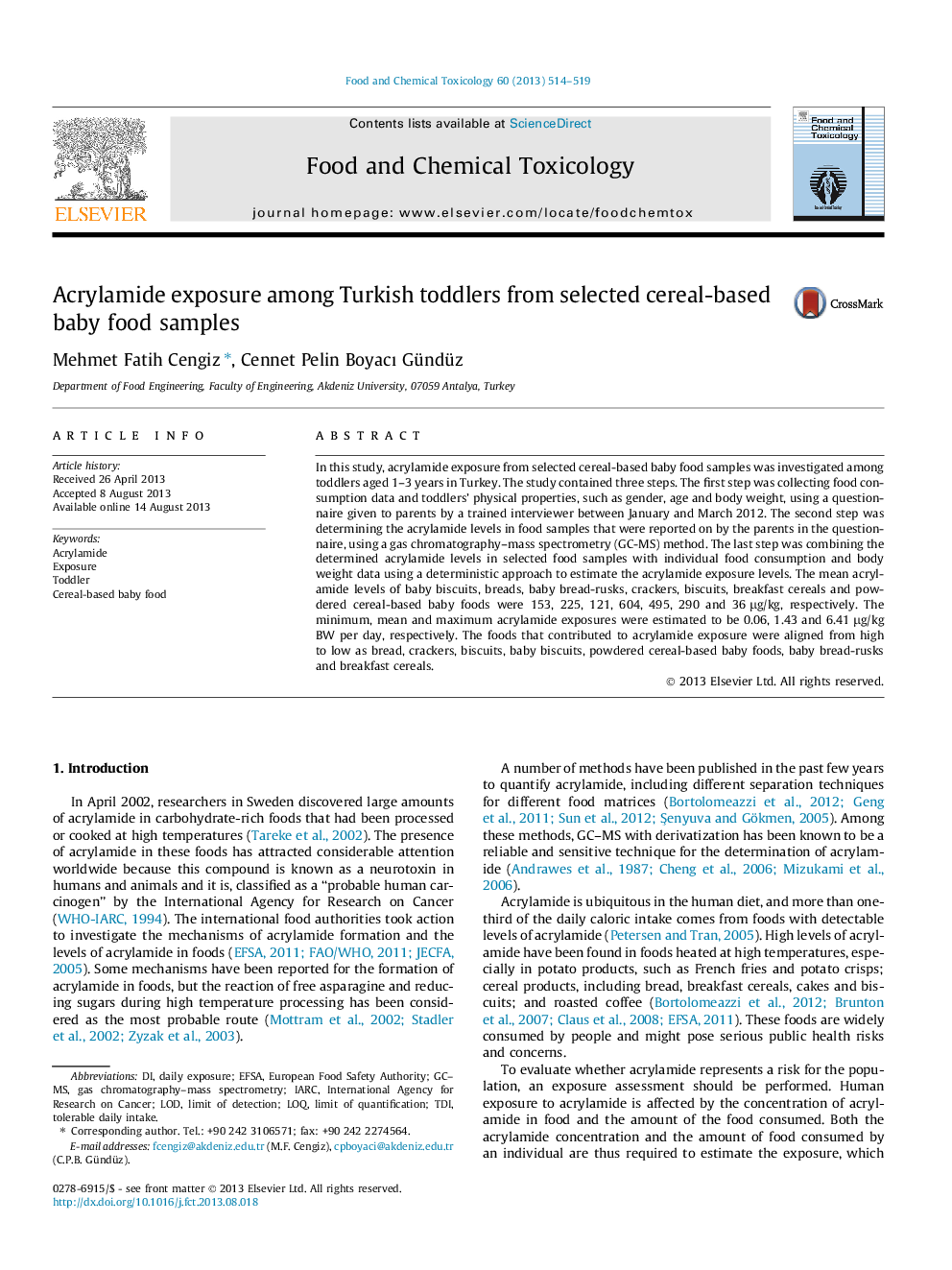| Article ID | Journal | Published Year | Pages | File Type |
|---|---|---|---|---|
| 2585139 | Food and Chemical Toxicology | 2013 | 6 Pages |
•The mean acrylamide levels of cereal-based baby foods ranged from 36 to 604 μg/kg.•Estimated mean acrylamide exposures of Turkish toddlers from cereal-based baby food was 1.43 μg/kg BW per day.•Bread was the most important source of acrylamide in the toddlers’ cereal-based diet.
In this study, acrylamide exposure from selected cereal-based baby food samples was investigated among toddlers aged 1–3 years in Turkey. The study contained three steps. The first step was collecting food consumption data and toddlers’ physical properties, such as gender, age and body weight, using a questionnaire given to parents by a trained interviewer between January and March 2012. The second step was determining the acrylamide levels in food samples that were reported on by the parents in the questionnaire, using a gas chromatography–mass spectrometry (GC-MS) method. The last step was combining the determined acrylamide levels in selected food samples with individual food consumption and body weight data using a deterministic approach to estimate the acrylamide exposure levels. The mean acrylamide levels of baby biscuits, breads, baby bread-rusks, crackers, biscuits, breakfast cereals and powdered cereal-based baby foods were 153, 225, 121, 604, 495, 290 and 36 μg/kg, respectively. The minimum, mean and maximum acrylamide exposures were estimated to be 0.06, 1.43 and 6.41 μg/kg BW per day, respectively. The foods that contributed to acrylamide exposure were aligned from high to low as bread, crackers, biscuits, baby biscuits, powdered cereal-based baby foods, baby bread-rusks and breakfast cereals.
